Seal impacts on cod recovery confirmed!
Harp seals are having a real impact on groundfish recovery, and it’s time for balanced ocean management. Read the full study: CLICK HERE.
Read the full study
Shop
The annual seal harvest contributes to marine biodiversity protection.
This video shows a small sample of the estimated 4.4 million harp seals of the Northwest Atlantic. The footage was taken in April 2022 off the Northeast Coast of Newfoundland, just south of the Horse Islands, NL, Canada.
Canada’s fish stocks are declining, and our commercially important fisheries are under pressure as a result. Losing these vital ocean resources doesn’t just affect our coastal communities. It affects every Canadian.
Seals eat a lot of fish – roughly 30 million tonnes each year. That’s 24x more than our entire Atlantic fishing fleet catches.Several studies have indicated the amount of fish eaten by harp seals. A study of harp seals by Polar Research estimated 7.4 kg/day for adult males and 9 kg/day for adult females, with females consuming more to support pregnancy and lactation: https://www.tandfonline.com/doi/pdf/10.3402/polar.v10i2.6771. Assuming the population is half male and half female, that means an average seal eats 2.99 tons/year. In 2019, the grand total of the Atlantic Coast commercial landings were 560,484 metric tonnes. https://www.dfo-mpo.gc.ca/stats/commercial/land-debarq/sea-maritimes/s2019aq-eng.htm Canada’s total seal population is estimated at more than 10 million. Ringed seal populations is estimated at 2.3 million: https://www.canada.ca/en/environment-climate-change/services/species-risk-public-registry/cosewic-assessments-status-reports/ringed-seal-2019.html Together with Harp Seal (7.6 million) and grey seals (505,000), this represents over 10M population for these 3 species. This means that the total Canadian seal population eats roughly 30 million tons of fish each year. That’s 53x more fish than the entire Canadian Atlantic fishing fleet catches! Facts: Ringed seal populations is estimated at 2.3 million: https://www.canada.ca/en/environment-climate-change/services/species-risk-public-registry/cosewic-assessments-status-reports/ringed-seal-2019.html Together with Harp Seal (7.6 million) and grey seals (505,000), this represents over 10M population for these 3 species. Calculation: (7.4+9)/2 = average of 8.2KG per seal. 8.2*365 days per year = 2,993KG. 2,993KG x 10 million seals = 29,930,000,000. 29,930,000,000 (total KG of fish eaten by seals)/ 560,000,000 (harvested by the Atlantic fishing fleet) = 53 times.Meanwhile, seal populations are at the highest level on record. Controlling seal populations is one of the ways we can help fish stocks rebound. And in turn, we’ll be supporting our fisheries and ocean economy, which create 350,000 jobs and bring in over $31B each year.Government of Canada. Blue Economy Strategy. 2021 https://www.dfo-mpo.gc.ca/campaign-campagne/bes-seb/index-eng.html
Harp seals are having a real impact on groundfish recovery, and it’s time for balanced ocean management. Read the full study: CLICK HERE.
Read the full study

For any additional information and references regarding the video and the infographic, CLICK HERE.
Download infographic!
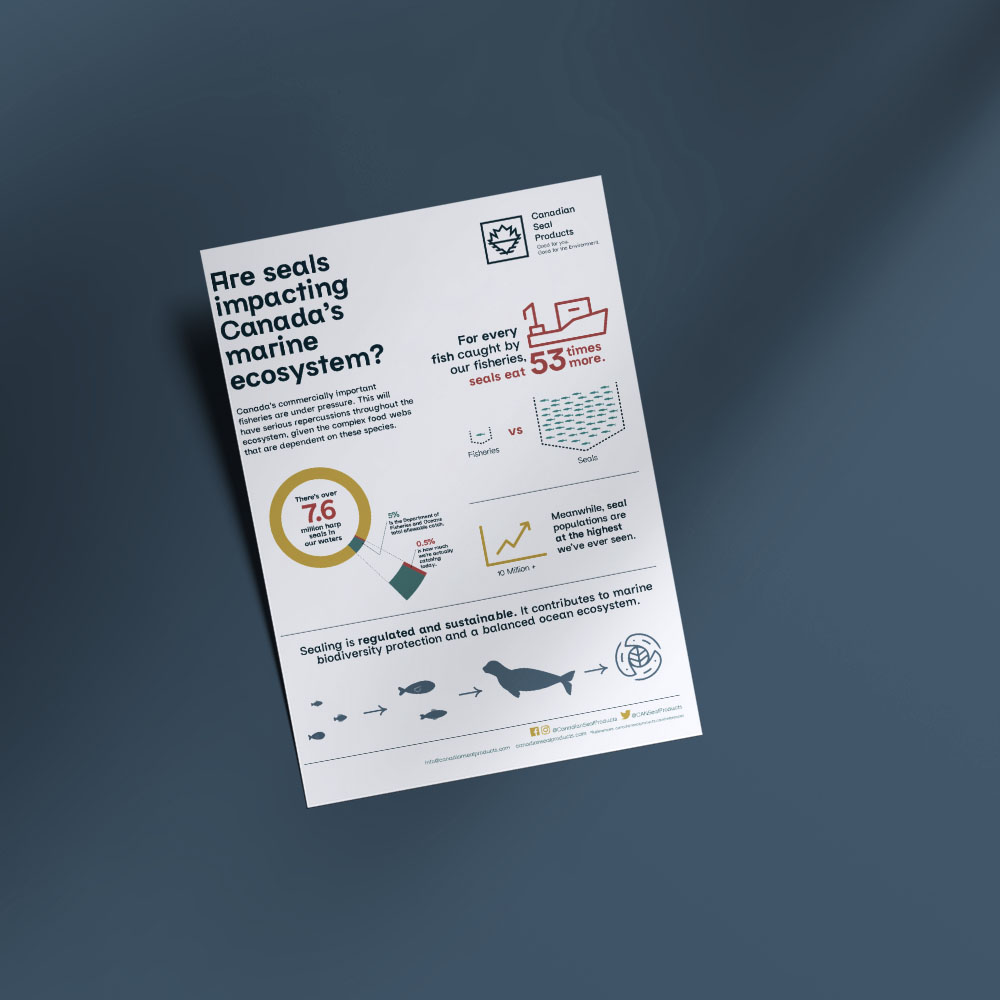
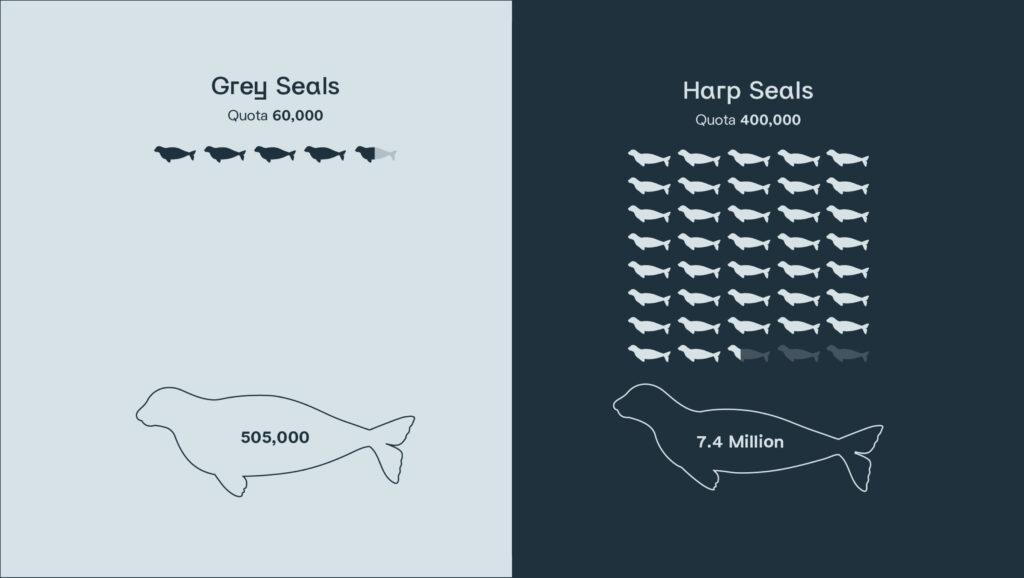
One of the more prominent seal species found in Canadian waters is the harp seal, with a population that’s grown nearly 60% to 7.6 million since 1994. In 2020, the Government of Canada’s total allowable catch limit for the harp was only 5% of its population. And in recent years, the total number of catches only reached 10% – a fraction of that annual quota.
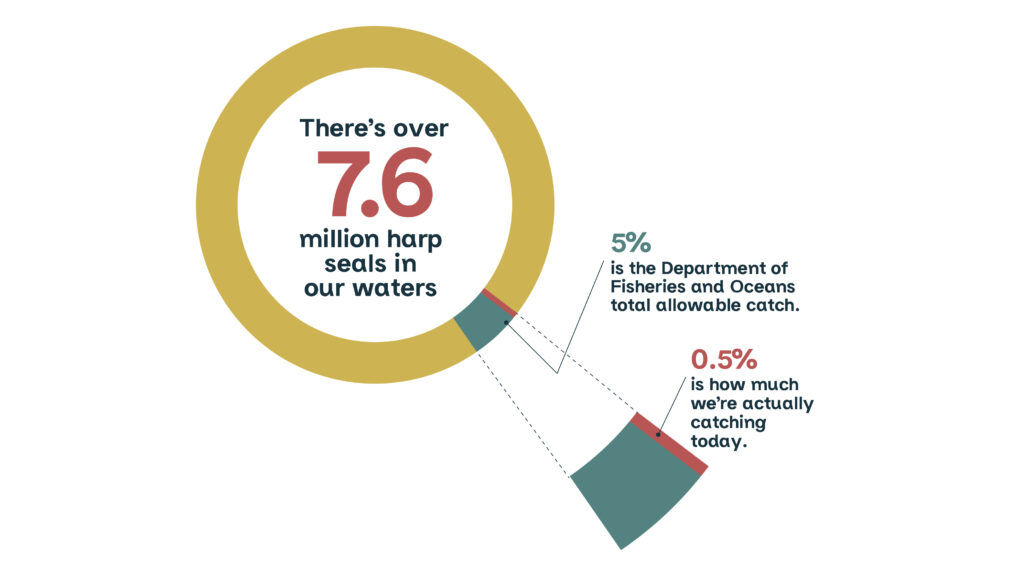
Seal populations are at the highest we’ve ever seen! Out of the 33 species of seal found worldwide, 6 of them can be found in Canada, and none are endangered.Identify a Species. Department of Fisheries and Oceans. March 2018. LINK / Note: Six species of seals – the harp, hooded, grey, ringed, bearded and harbour – are found off the Atlantic coast of Canada, although ringed and bearded seals are typically Arctic species. However, some science include the Northern Elephant seal specie in British Columbia increasing the number to 7 species of Phocidae. If we include Otariidae, Phocidae and Odobenidae, there are a total of 11 species present in Canadian waters: Northern Fur Seal, Northern Sea Lion, California Sea Lion, Hooded Seal, Bearded Seal, Grey Seal, Northern Elephant Seal, Harp Seal, Harbor Seal, Ringed Seal and Walrus. In fact, Canada’s total seal population is estimated at more than ten million, the largest number ever observed by the Department of Fisheries and Oceans.Here is how the 10 Million is calculated:
Harp Seal: 7.6 million. Science Advisory Report 2020/020, Department of Fisheries and Oceans. Government of Canada. LINK, IUCN Redlist, specie of least concern LINK.
Grey Seal: 366,400. Department of Fisheries and Oceans. Science Advisory Report 2022/018, Stock assessment of Northwest Atlantic grey seals (Halichoerus grypus) in Canada in 2021, June 2022. LINKHooded Seal: 593,000 LINK, LINK.Ringed Seal: 2 million LINK.Bearded Seal: 500,000 to 1 million across the Arctic LINK LINK.Harbour Seal: 100,000 British Columbia and 25,000 Atlantic Canada LINK, LINK, LINK
If we include these 6 species, this represents a total of approximately 11.5 Million seals. We keep a margin of error of 1.5 Million seals so we can confirm with confidence a population of at least 10 Million.
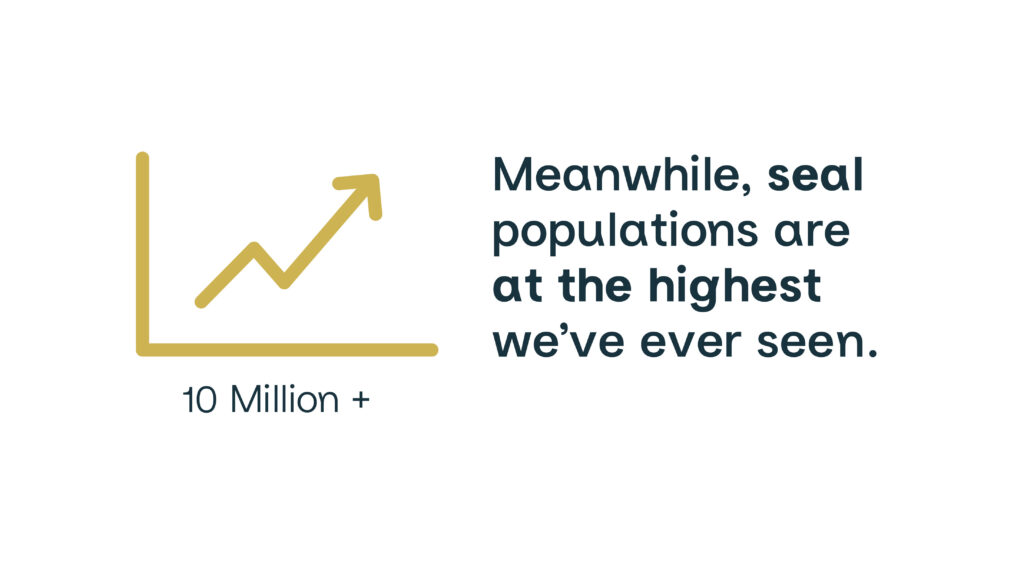
In recent years, the Total Allowable Catches determined by scientists and set by the Canadian Government have not been fulfilled, primarily due to the loss of local and international markets for seal products.
Estimated size of the Harp, Grey and Ringed seal herd off Atlantic Canada
Harp seal and grey seal Total Allowable Catches for the 2020 hunt.
The percentage of the 460,000 seal quota that was harvested in 2019.In 2019 a total of 32,199 harps seals and 1,232 Grey seals were harvested. Fisheries and Oceans Canada Report.
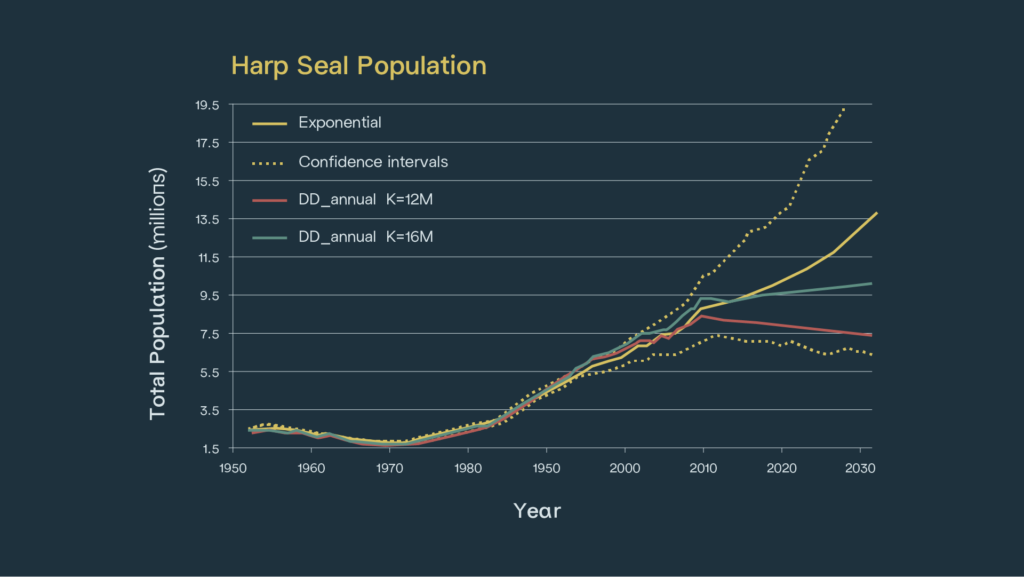
The Canadian seal population eats over 24 times more fish than the entire Atlantic Canadian fishing fleet’s annual seafood harvest.Several studies have indicated the amount of fish eaten by harp seals. A study of harp seals by Polar Research estimated 7.4 kg/day for adult males and 9 kg/day for adult females, with females consuming more to support pregnancy and lactation. Assuming the population is half male and half female, that means an average seal eats 2.99 tons/year. LINKFacts: Ringed seal populations is estimated at 2.3 million. Ringed Seal (Pusa hispida): COSEWIC assessment and status report 2019. LINK Together with Harp Seal (7.6 million) LINK and grey seals (424,300) LINK, this represents over 10M population for these 3 species. Calculation: (7.4+9)/2 = average of 8.2KG per seal. 8.2*365 days per year = 2,993KG. 2,993KG x 10 million seals = 29,930,000,000. 29,930,000,000 (total KG of fish eaten by seals)/ 560,000,000 (harvested by the Atlantic fishing fleet) = 53 times.
The 2019 hunt alone saved our fishery $250 million in fish resources that would otherwise be consumed by seals.Approximately 32,000 harp seals were harvest in 2019. It is estimated that seals eat over 1.5 tons of fish per year. The value per tons of fish was at $5,200 in 2018. Source: 32,000 seals x 1.5 tons x $5,200 = $CAD 250 MILLION.
If the full quota was harvested, that value would be CAD$3.12 Billion.The annual quota is 400,0000 for harp seals. It is estimated that seals eat over 1.5 tons of fish per year. The value per tons of fish was at $5,200 in 2018. Source 400,000 seals x 1.5 tons x $5,200 = $CAD 3.12 BILLION.
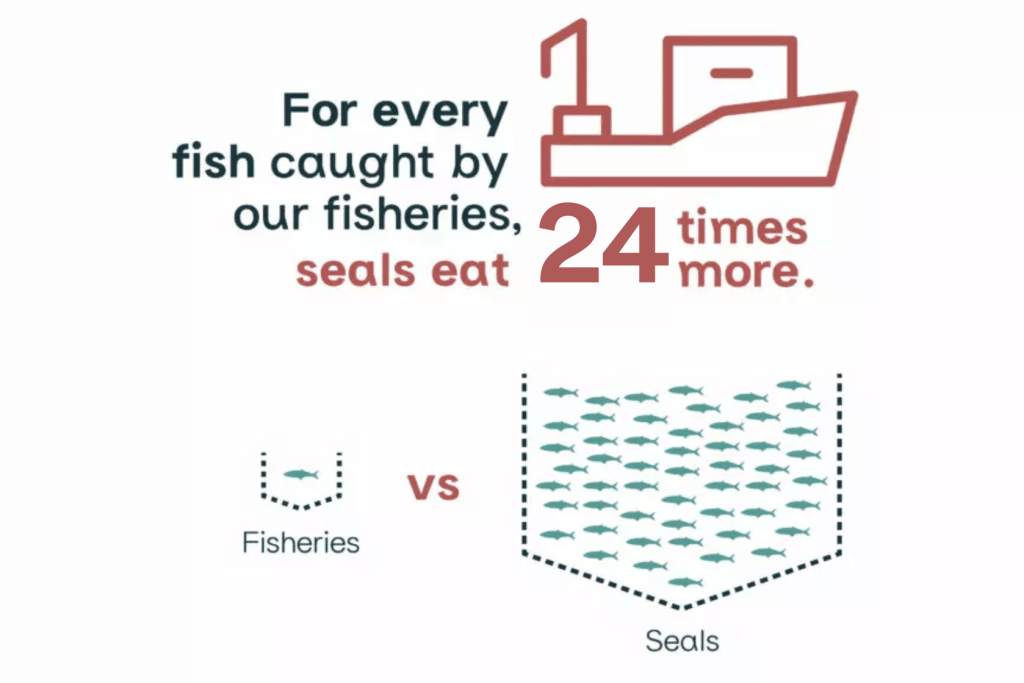
Harp and Grey seals are part of the LIST of the 41 marine species that are valued by “Smarter Seafood” eco-guide, created to enable the sustainable development of the St. Lawrence.
Learn more

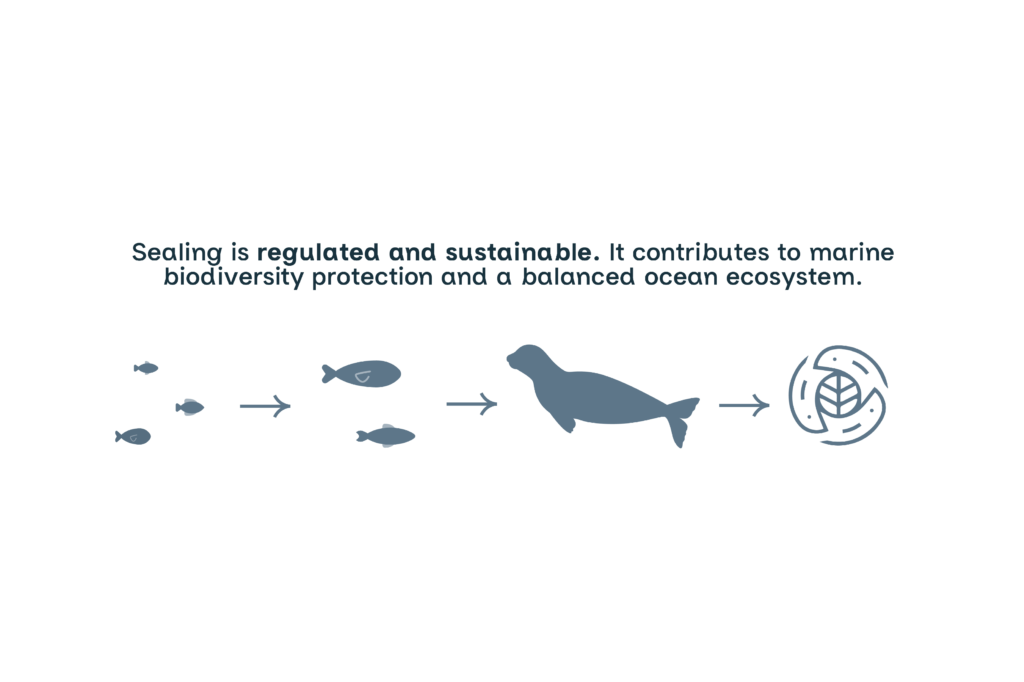
Learn more
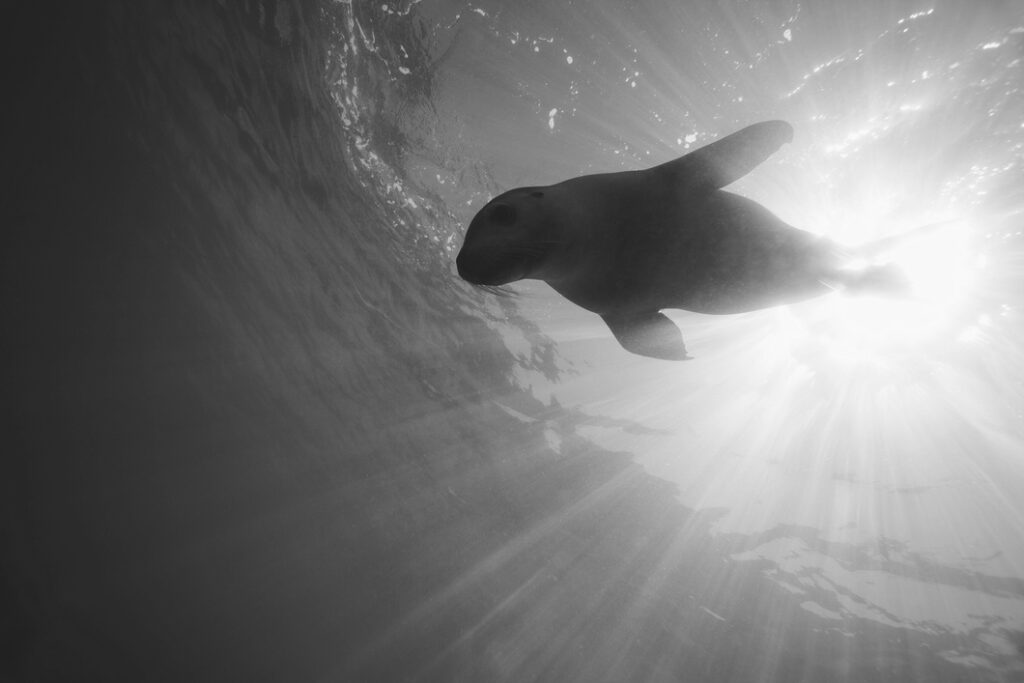
We bring together Canada’s sealing industry harvesters, processors, manufacturers, retailers and Indigenous peoples of Canada to promote and market high quality and sustainable Canadian Seal Products. You can learn more about our mission and the industry in our brochure.
Download brochure
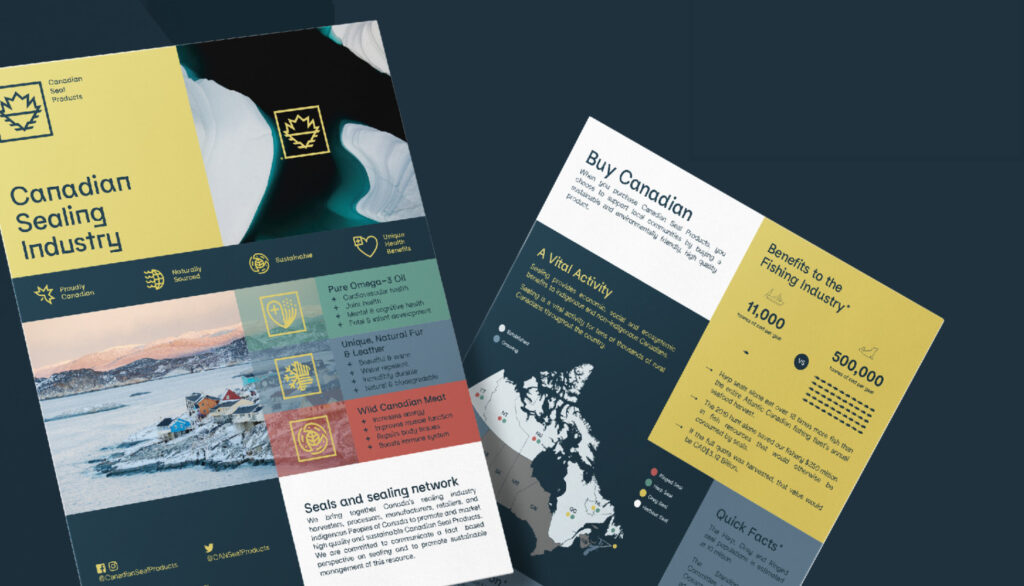

Sealing is a vital activity for ten of thousands of rural Canadians throughout the country. Seal hunt sustains northern and coastal communities nutritionally, culturally and economically.
Learn more
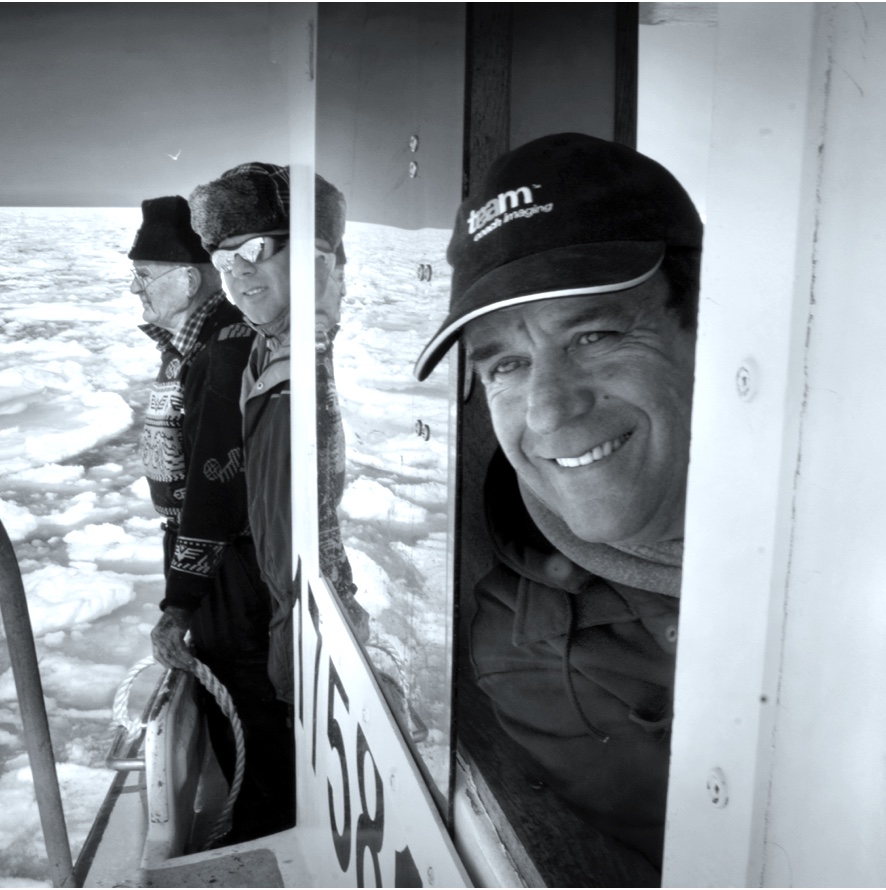
Canada’s world-leading animal welfare standards, codes of practice, training and licensing programs ensure human harvesting and the highest quality products.
Learn more
Learn more